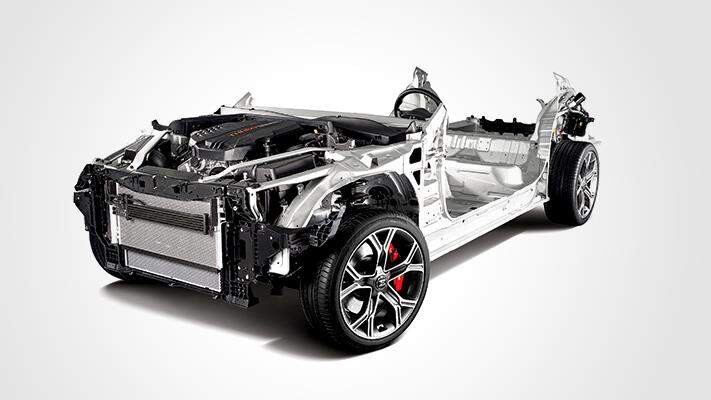All-Wheel Drive (AWD) is a term frequently encountered in the automotive world, often mentioned alongside Four-Wheel Drive (4WD). While both systems deliver power to all four wheels, enhancing traction and control, they are fundamentally different in their design and application. Understanding what AWD is and how it differs from 4WD is crucial for car buyers looking to make informed decisions, especially when considering vehicle performance in various driving conditions.
 AWD vs 4WD system differences
AWD vs 4WD system differences
Defining All-Wheel Drive (AWD)
AWD is a drivetrain system that continuously or automatically engages all four wheels to provide power to the road. Unlike 4WD, which is often manually engaged and designed for rugged off-road terrains, AWD is typically always active, working seamlessly in the background to enhance stability and traction on a variety of surfaces. The primary goal of AWD is to improve handling and control in everyday driving situations, including wet, snowy, or lightly uneven roads, rather than tackling extreme off-road obstacles.
AWD vs. 4WD: Key Differences in Driving Conditions
Both AWD and 4WD systems improve traction, making them beneficial in challenging weather conditions like snow and rain. When roads become slippery due to ice or rain, both drivetrains offer a significant advantage over two-wheel drive systems. However, AWD truly shines in consistently snowy or icy conditions. Many modern AWD systems come equipped with “snow” or “low traction” modes, which optimize the system’s responsiveness for these specific situations. Even without manual adjustments, the automatic nature of AWD allows it to react faster than a driver could to changes in road conditions, providing preemptive traction enhancement.
While 4WD excels in demanding off-road environments, such as deep water crossings or steep inclines, AWD is generally not designed for such extreme conditions. Instead, AWD is engineered for a broader spectrum of driving scenarios, providing enhanced grip and stability in everyday situations where traction might be compromised.
Advantages and Disadvantages of AWD Systems
The most significant advantage of AWD is its automatic and seamless operation. Drivers don’t need to manually engage or disengage AWD; the system is always ready to distribute power where it’s needed most. In situations where traction is suddenly lost, the AWD system reacts instantly, transferring power to the wheels with the most grip. This proactive approach to traction management enhances safety and control in unpredictable driving conditions.
AWD systems are versatile and found in a wide array of vehicles, from compact sedans to large SUVs. This broad application provides consumers with numerous options when seeking the benefits of all-wheel drive. AWD systems operate effectively in diverse conditions, from dry pavement to rain and snow, making them a practical choice for drivers in varied climates. However, it’s important to note that AWD is less suited for severe off-road terrains compared to dedicated 4WD systems.
Conversely, 4WD systems are optimized for challenging unpaved roads, including gravel, sand, and rocky trails. While some modern 4WD systems offer automatic engagement, allowing vehicles to switch between 2WD and 4WD as needed, their primary focus remains off-road capability.
One common drawback shared by both AWD and 4WD is reduced fuel efficiency. These systems typically add weight to a vehicle and increase drivetrain complexity, which can negatively impact fuel economy and increase fuel costs.
Lesser-Known Advantages of AWD
While AWD’s benefits in snow and ice are well-known, its advantages extend beyond adverse weather conditions. AWD can also improve vehicle performance on dry roads. By distributing power to all four wheels, AWD can enhance acceleration, providing quicker off-the-line performance and improved handling during cornering. This performance benefit is why some sports cars and performance-oriented vehicles are adopting AWD systems.
For instance, the Kia Stinger GTS features a dynamic AWD system with a drift mode, appealing to drivers who appreciate engaging driving dynamics. While based on the standard Stinger’s AWD, the GTS variant is tuned to send more power to the rear wheels in Sport mode, offering a rear-biased driving feel.
Furthermore, electronic AWD systems are increasingly prevalent in luxury vehicles. These sophisticated systems prioritize fuel efficiency in normal driving conditions by sending most power to the rear wheels, mimicking the nimble handling of Rear-Wheel Drive (RWD). However, when sensors detect slippery conditions, the electronic AWD system instantaneously redistributes torque to both front and rear axles to maintain stability and control. This technology allows drivers to enjoy the agility of RWD and the added safety and traction of AWD in a single vehicle.
In conclusion, understanding “What Is Awd In Cars” reveals a drivetrain system designed for enhanced traction and stability in a wide range of everyday driving conditions. While not intended for extreme off-roading like 4WD, AWD provides significant benefits in inclement weather and can even improve on-road performance, making it a valuable feature for many drivers.
